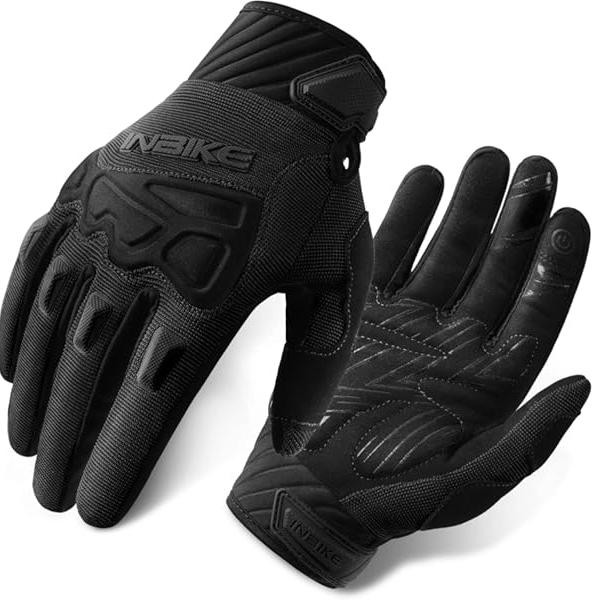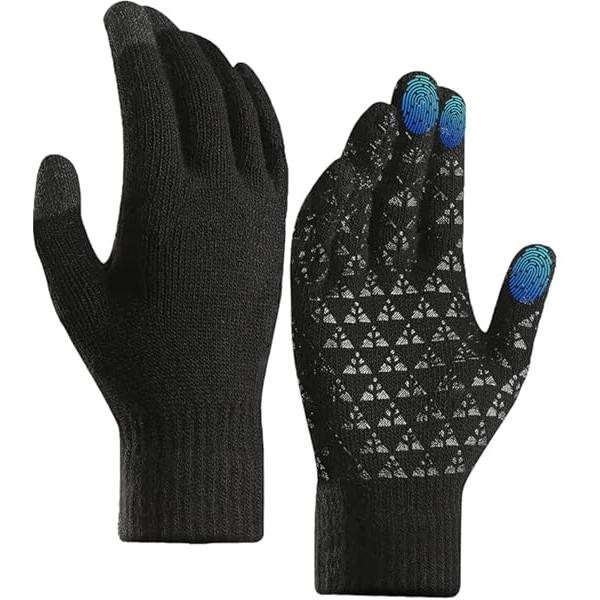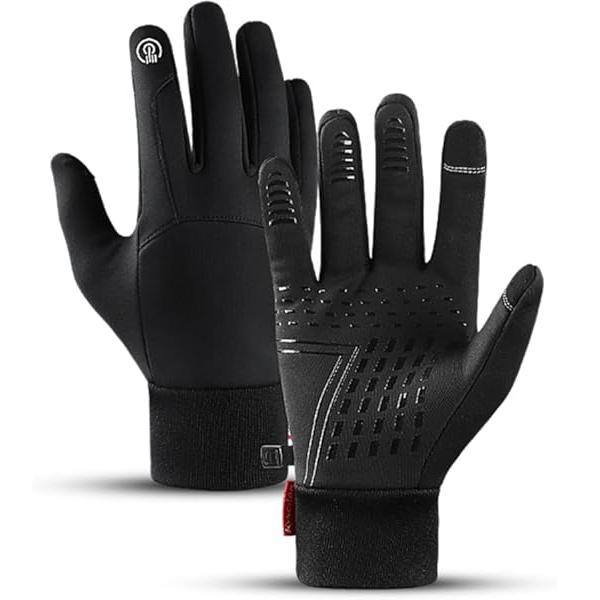When it comes to motorcycle riding, safety should be a top priority. One essential piece of gear that every rider needs is a good pair of motorcycle gloves. However, as with any equipment, wear and tear will affect their lifespan. This leads to an important question for riders: how long do motorcycle gloves last? Understanding the lifespan of your gloves can help you make informed decisions about your gear. A variety of factors can influence the durability of motorcycle gloves, including materials, usage conditions, and maintenance practices. Moreover, knowing when to replace them can significantly enhance your safety on the road. This article aims to explore the topic in-depth, answering the key question of how long motorcycle gloves last and providing valuable insights into what affects their lifespan. Additionally, it will detail care and maintenance tips, signs indicating it’s time for a replacement, and advice on selecting the most durable gloves for your motorcycle adventures.
The Importance of Motorcycle Gloves
Motorcycle gloves serve several critical functions that enhance safety and comfort for riders. Understanding their importance can clarify why riders should prioritize finding high-quality gloves.
Protection
The primary purpose of motorcycle gloves is protection. In the unfortunate event of a fall or accident, gloves shield the hands from abrasions, cuts, and impact injuries. They absorb shocks and provide a barrier between the skin and the road surface. Factors like reinforced knuckles and palm padding add extra protection levels.
Comfort
Riding a motorcycle for extended periods can lead to fatigue and discomfort if proper gear is not worn. Quality motorcycle gloves are designed for comfort, featuring ergonomic shapes and breathable materials. Comfort-enhancing features such as gel padding and moisture-wicking linings contribute to the overall riding experience.
Grip and Control
Motorcycle gloves often feature special grips on the palms and fingers to enhance grip on the handlebars. This added control allows riders to maneuver more confidently and safely, especially in challenging conditions like rain or rough terrain. A secure grip also contributes to overall handling, helping with throttle and brake control.
Weather Resistance
Many motorcycle gloves come with weather-resistant features. For instance, some gloves offer waterproofing for wet conditions, while others have insulation for cold weather rides. Choosing the right gloves can significantly enhance comfort in various weather conditions.
Style and Expression
Lastly, motorcycle gloves are not only functional but also a means of expression. Riders often choose gloves that reflect their style and personality. Various designs, colors, and materials allow riders to showcase their individuality while riding.
By understanding the importance of motorcycle gloves, riders can better appreciate the need for durability and quality when making a purchase.
Factors That Influence the Lifespan of Motorcycle Gloves
The question remains: how long do motorcycle gloves last? Several factors contribute to the lifespan of motorcycle gloves, and recognizing these can help you choose the right pair for your riding habits.
Material Quality
The materials used in the construction of motorcycle gloves play a significant role in their durability. High-quality leather gloves often last longer than those made from synthetic materials. Goat leather, cowhide, and kangaroo leather are commonly used for their strength and abrasion resistance.
- Leather: Known for its excellent durability and abrasion resistance, leather is a popular choice for motorcycle gloves. However, the type of leather can impact longevity; for instance, full-grain leather offers better protection compared to suede.
- Textile: Textile gloves made from materials like nylon or Kevlar can provide excellent abrasion resistance. These materials may also offer increased breathability and water resistance. However, textile gloves may not last as long as leather gloves under high-stress conditions.
Usage Frequency and Riding Conditions
How often you ride also significantly affects the lifespan of your motorcycle gloves. Daily riders will naturally experience more wear than those who ride occasionally. Additionally, the conditions in which you ride matter. Riding in extreme conditions, such as heavy rain or harsh sunlight, can accelerate wear and tear on gloves.
- Urban Riding vs. Long-Distance Touring: Urban riding often involves more rapid acceleration and braking, leading to faster wear on the palms. In contrast, long-distance touring may place more stress on the seams due to prolonged pressure.
- Weather Factors: Conditions such as rain and sun exposure can degrade materials over time. Water can weaken some textiles, while UV rays can cause leather to dry out and crack.

Maintenance Practices
Proper care and maintenance can significantly influence how long motorcycle gloves last. Regular cleaning and conditioning can help maintain the integrity of the materials used in the gloves.
- Cleaning: Following the manufacturer’s recommendations for cleaning is essential. Some gloves may be machine washable, while others require hand washing or special products.
- Conditioning: Leather gloves benefit from periodic conditioning, maintaining their suppleness and preventing cracking. Using recommended products also helps retain the gloves’ protective properties.
- Storage: Storing gloves properly when not in use can extend their lifespan. Keeping them out of direct sunlight and away from moisture can prevent deterioration caused by environmental factors.
Design Features
The design features of motorcycle gloves can also contribute to their durability. Gloves with reinforced stitching at seams, padded palms, and protected knuckles tend to last longer. Here are some features that make gloves more durable:
- Dual-layer Construction: Some gloves feature dual-layer construction that enhances durability while maintaining flexibility.
- Reinforced Areas: Areas susceptible to wear, such as the palms and finger joints, should be reinforced for added durability.
- Quality Stitching: Strong, precise stitching can prevent seams from coming apart, extending the gloves’ lifespan.
By paying attention to these factors, riders can make informed choices regarding the longevity of their motorcycle gloves.
Average Lifespan of Motorcycle Gloves
The average lifespan of motorcycle gloves can vary significantly based on several factors discussed previously. However, a general timeframe can be established to provide insights for riders.
General Lifespan Estimates
On average, well-maintained motorcycle gloves can last anywhere from one to five years, depending on the factors affecting wear.
- High-Quality Leather Gloves: Typically last longer, often reaching the five-year mark if properly maintained.
- Textile Gloves: Generally have a shorter lifespan, averaging one to three years, especially with regular use.
- Racing Gloves: Due to the higher stress and specificity of racing conditions, these gloves may need replacement every season or after a few thousand miles.
Usage Frequency Versus Lifespan
Individuals who ride daily should expect to replace gloves more frequently than those who use their motorcycle occasionally. For instance:
- Daily Riders: May need to replace gloves every 1 to 2 years due to regular wear and tear.
- Occasional Riders: Might find their gloves lasting about three to five years as they experience less stress and usage.
Signs of Wear
Recognizing when gloves begin to show signs of wear is crucial. Here are some indicators that it may be time to replace your gloves:
- Cracks or Tears: Visible damage to the materials can compromise safety and protection.
- Worn Padding: If the padding in the palms or knuckles wears down, it may lead to discomfort.
- Loss of Grip: If gloves lose their effectiveness in providing grip on handlebars, it can be dangerous while riding.
Monitoring these signs will help maintain safety while ensuring you’re using reliable gloves.
Proper Care and Maintenance for Motorcycle Gloves
Taking good care of your motorcycle gloves can extend their lifespan significantly. Here are some maintenance practices to consider:
Routine Cleaning
Keeping gloves clean is essential for their durability. Accumulated dirt, sweat, and grime can weaken materials over time.
- Leather Gloves: Use a damp cloth to wipe the exterior and apply leather cleaner as recommended by the manufacturer. Make sure to avoid soaking them and allow them to dry naturally.
- Textile Gloves: Depending on the cleaning instructions, machine wash or hand wash delicate items using mild detergent. After washing, air dry them away from direct heat sources.
Conditioning Leather
If you own leather gloves, conditioning them periodically can prevent cracking and drying.
- Leather Conditioner: Apply a quality leather conditioner following the manufacturer’s instructions. Ensure you apply it evenly and allow proper absorption.
Ventilation and Storage
After rides, always ventilate your gloves to prevent moisture buildup. This helps minimize odors and potential mold growth.
- Proper Storage: Store gloves in a cool, dry place, ideally on a hook or in a drawer, to maintain their shape and integrity. Avoid direct sunlight, which can damage materials and cause fading.
Inspecting for Damage
Make it a habit to inspect gloves for any visible damage regularly. Look for signs of wear on seams, embroidery, and padding. Early detection of issues can allow for timely repairs or replacements.
Avoiding Improper Use
Avoid using motorcycle gloves for activities outside riding. Using them for tasks such as gardening or heavy lifting can accelerate wear and may compromise their protective capabilities.
By following maintenance tips, riders can prolong the life of their motorcycle gloves while ensuring optimal performance and safety.
Choosing Durable Motorcycle Gloves
Choosing the right motorcycle gloves is crucial for ensuring a longer lifespan and better overall performance. Here are some important factors to consider when selecting durable gloves.
Material Selection
As previously mentioned, the material directly affects durability. Consider gloves made from high-quality leather, especially full-grain or top-grain varieties, for excellent longevity.
- Textile Options: If you prefer textile gloves, look for those reinforced with stronger fibers like Cordura or Kevlar, providing added protection and durability.
Fit and Comfort
A proper fit ensures that gloves will perform optimally while providing comfort. Gloves that are too tight or too loose can lead to discomfort and increased wear.
- Try Before You Buy: Whenever possible, try gloves on before purchasing. The gloves should feel snug but not restrictive.
Reinforced Features
Look for gloves with reinforced areas, such as padded palms, knuckles, and fingers. This added protection will reduce wear at key points and provide increased safety in case of a fall.
Weather Resistance
Consider the climates in which you typically ride. If you often ride in wet or cold conditions, opt for gloves designed for those weather scenarios. Waterproofing and thermal insulation can significantly enhance comfort and usability.
Brand Reputation
Choose gloves from reputable brands known for producing quality motorcycle gear. Researching user reviews and seeking recommendations from fellow riders can help you make an informed decision.
By taking the time to select the right gloves, you can ensure lasting performance and satisfaction during your rides.

Conclusion
In summary, the question of how long do motorcycle gloves last varies depending on several factors, including material quality, usage frequency, and maintenance practices. Generally, gloves can last anywhere from one to five years, with proper care making a substantial difference in lifespan.
Motorcycle gloves are essential for protecting your hands while riding. They enhance comfort, control, and safety on the road. By understanding the importance of these gloves, you can make informed decisions regarding their care and replacement. Regular maintenance and proper usage will help extend the lifespan of your gloves, ensuring you remain safe and comfortable during your rides.
As you explore your options for motorcycle gloves, consider the various styles, materials, and features available. By selecting the right pair, coupled with a commitment to care, you can enjoy many safe and pleasurable rides.